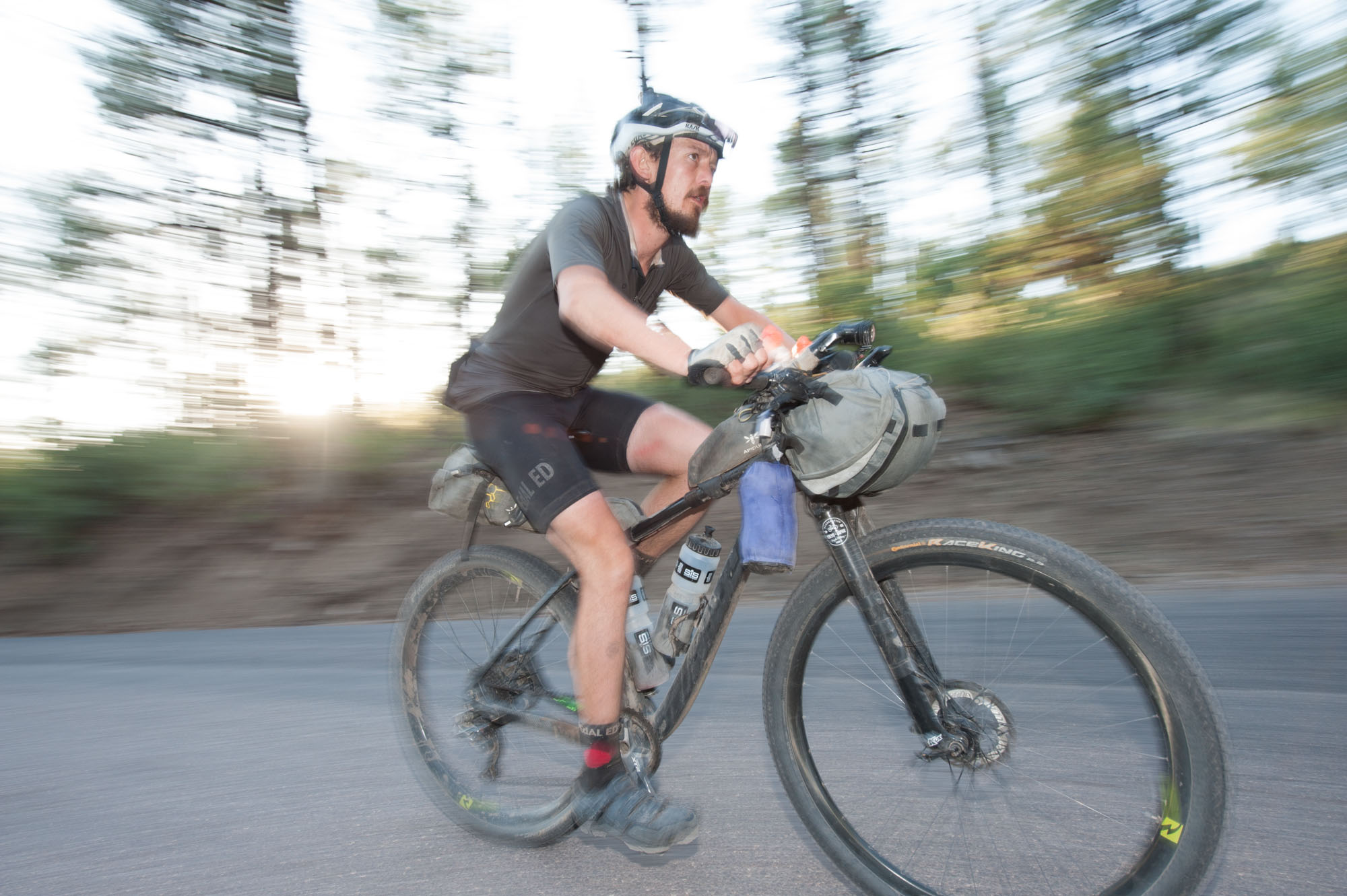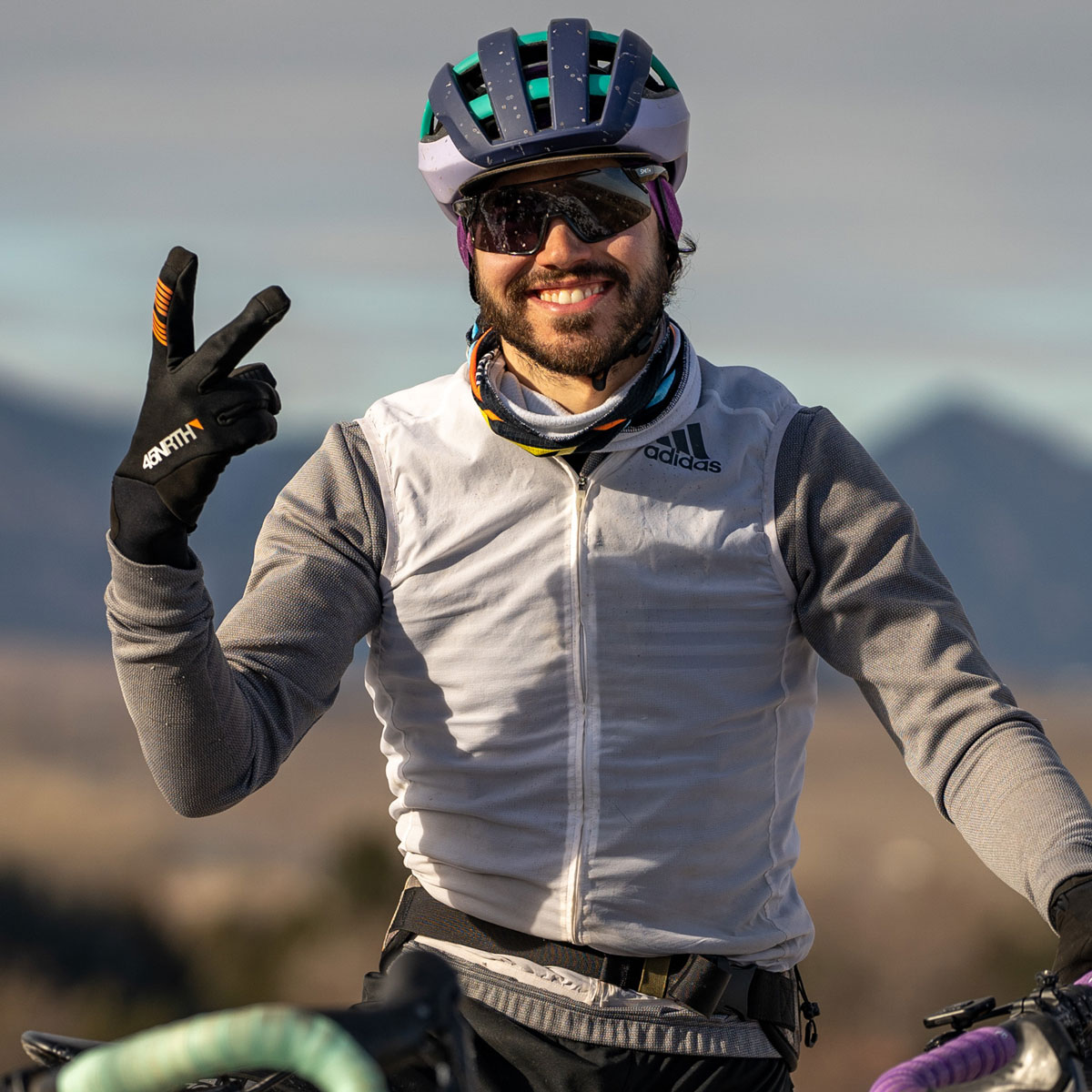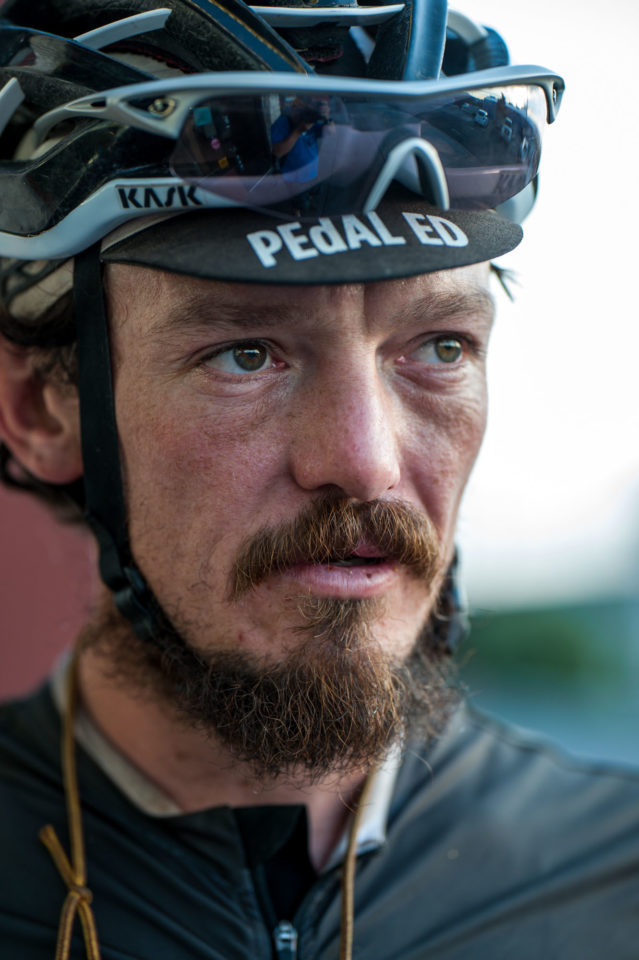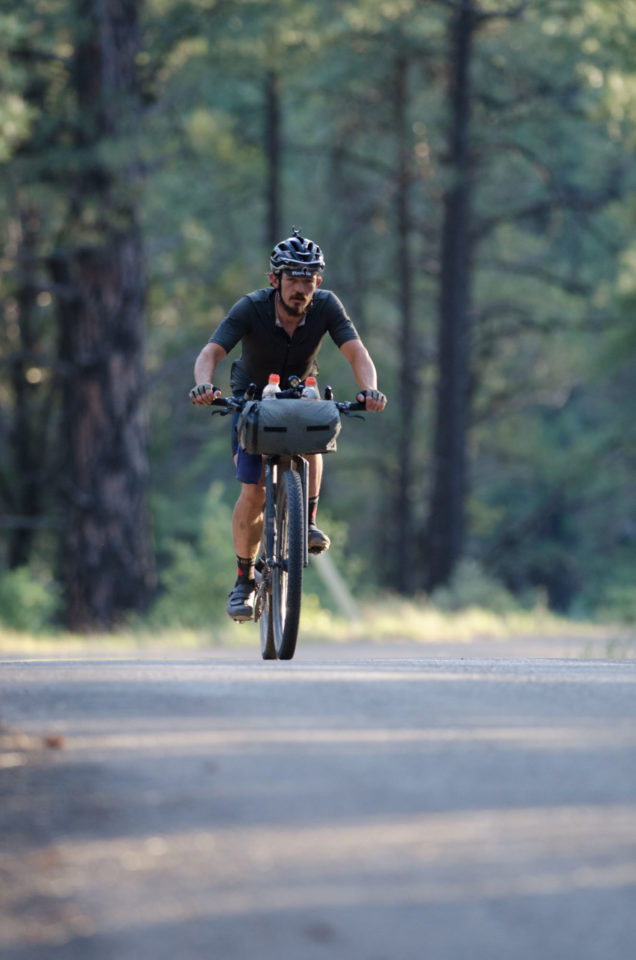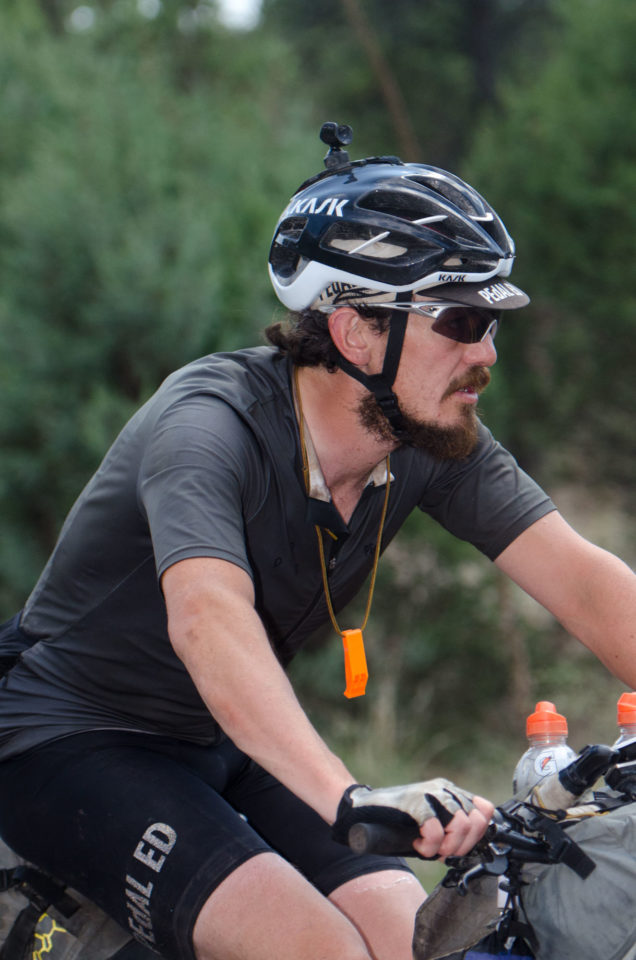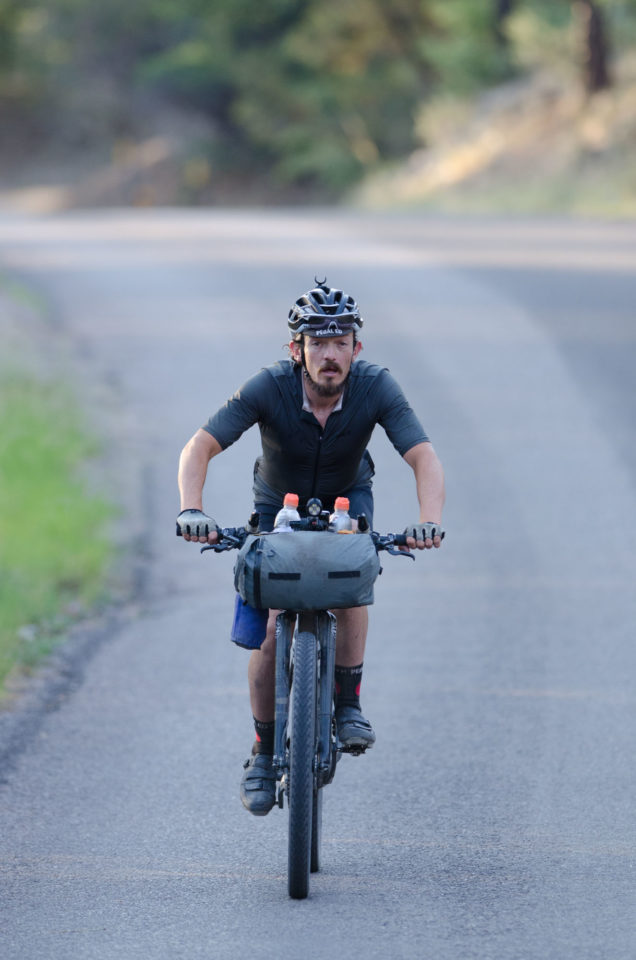2016 Interview with Tour Divide Legend Mike Hall
After the Tour Divide dust has settled, legend, Mike Hall’s 2016 sub-14-day record still goes unchallenged. Here’s the 2016 post-race interview with Mike, refreshed and reposted from Bikepacker.com…
In 2016, the late Mike Hall led an incredible, unmatched performance on the 2,750-mile Tour Divide, with an official finish time of 13 days, 22 hours, and 51 minutes (13:22:51). The closest anyone has come to this record was in 2015 when Josh Kato completed the race in 14:11:37. Again in 2019, Mike’s record went undefeated. Here’s the post-race interview from June 28, 2016:
After what is arguably the best performance in Tour Divide history, we caught up with the record holder himself, Mike Hall, to get the scoop from his amazing run down the Great Divide Mountain Bike Route.

When did you decide to race the Tour Divide again?
I thought about racing again in 2014, especially when I heard Jefe Branham was racing. I have a lot of respect for him and wanted to meet him on course as it were. Then I was in a dilemma about that and the Trans Am. First editions of races are always fun as no one knows what is going to happen and they never come around again. I decided to defer racing the Tour Divide, but I knew I wasn’t done with it. Plus, after not really having a space in my life for racing in 2015 due to lots of commitments, I really felt the need to get back to racing in 2016. Two years between races is really a long time and you start to wonder if you still have it.
What keeps bringing you back to racing these long-distance endurance events?
It’s a particularly long way to come for those of us from overseas, so there has to be a good draw. I wasn’t too concerned that I didn’t get the record in 2013 as I felt I had demonstrated that more was possible. After seeing Josh’s excellent run and record in 2015 go just 18 minutes quicker and knowing there were some places I let off the gas in 2013, I knew I could go quicker still and the 14-day mark started to look very attractive to break. Also, for me the TDR is still the most prominent and respected of the bikepacking ultras and where you will come up against the best field of racers.
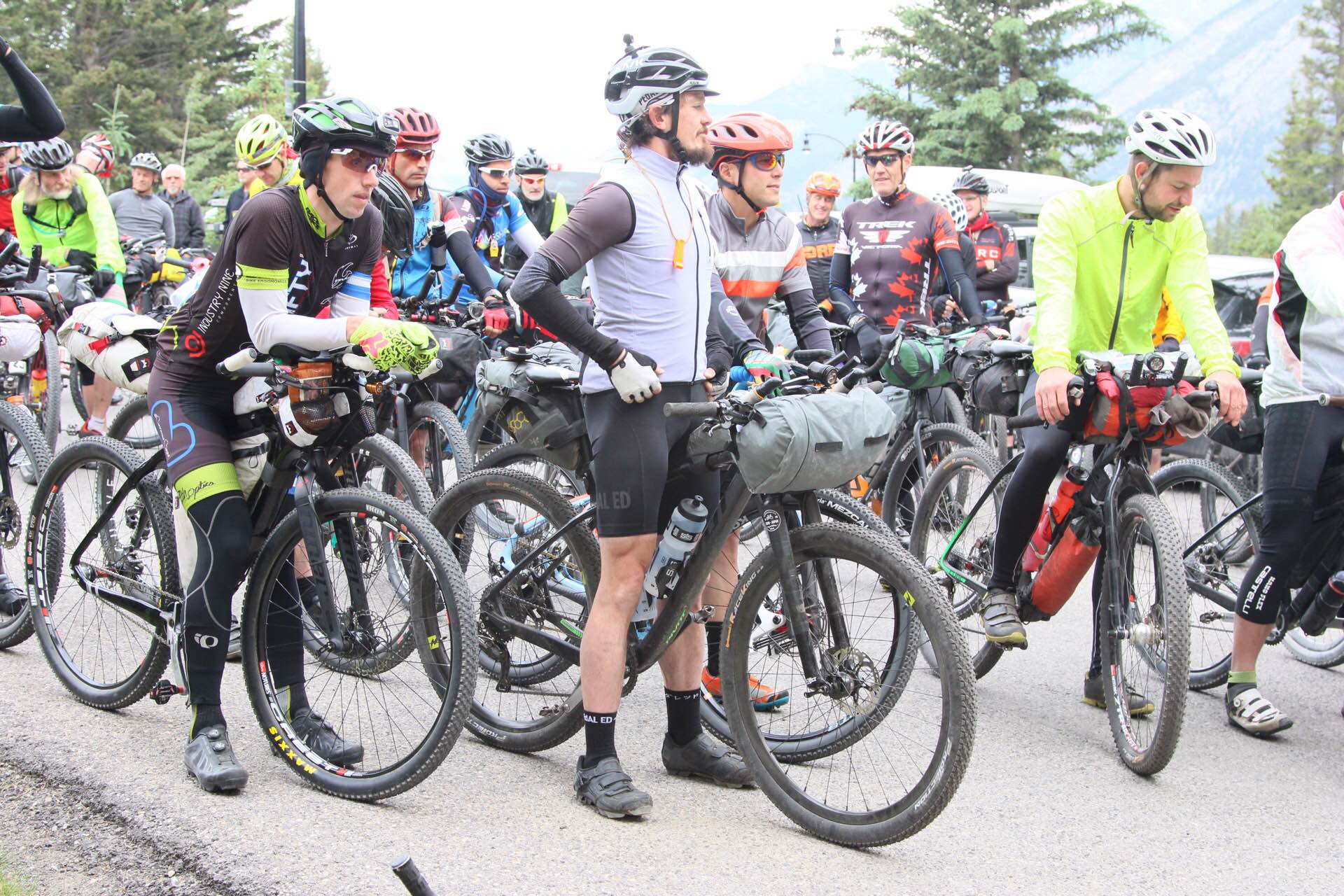
What’s your opinion on this race as a whole, as you have seen it evolve over the last few years?
As I’ve said, I think it is still the premiere bikepacking competition event for racers as it has that prestige to draw a high quality field from around the world. I can’t comment about how life in the mid-pack might have changed due to the swell in numbers as I’ve only ever been out there mostly on my own. Maybe there are a few more establishments on the course aware of it now and willing to serve racers. I still think the feel of the race is the same (at the front end) as it was when I was hanging on to 4th place in 2011.
Tell us five things that were different about your experience this year in comparison to your experience in 2013.
1. It was certainly more wet at the start, 2. I didn’t see so many bears, 3. I saw quite a few more riders touring, especially northbound, 4. I had fewer breathing and voice difficulties, 5. I was alone sooner and for longer. The start was also a bit more calm, which was nice, although I got the feeling I was being watched quite closely to see what I did. At least it meant no one was attacking.
What does a typical week of training look like for you a couple of months out from a race of this caliber? How do you prepare mentally and physically?
To be honest, it’s not full of stupid miles. I might do 200+ miles about three or four times during the spring, just to make sure I’m conditioned to the saddle time and the ‘form’ is there. Big miles don’t make you any quicker though, or any more able to push yourself to ride quicker. I like to work on strength and conditioning, you can do this by riding heavily loaded bikes or riding steep hills. Single speed riding is also good, where you have no choice to push a gear. It trains the body and the brain to be comfortable pushing a bigger gear.
Mentally, I probably do what everyone else does and obsess over all the details. This tells me I care enough to want to do everything well, but isn’t always useful. I find I still procrastinate over things while I’m still in reach of all my other options, so it’s good to get yourself and your kit away from home a good few days before the race so you only have what you have and your problems are smaller. Then it is usually easier to focus on what is needed and be calm.
In the past, you have lost your voice. According to your call-ins this year, you haven’t had that issue. What have you done differently to avoid that this year?
I think the moisture in the north certainly helped, and I brought along antihistamines to combat the breathing issues I had last time. Also, there wasn’t any smoke in the air, so I think all that helped. I did get some acute breathing issues, however, on the section just after Lincoln. This was where I had the worst of the problems in 2013 and very nearly scratched. I think the anti-allergens helped but they were only fighting it, not preventing it. There appears to be something going on around there that really affects me, but thankfully it appears to be very localised, so when I got past Helena I was fine and wasn’t taking the meds.
Another thing I did further south into Colorado was to get some mints to suck on, this seemed to help keep the moisture in my mouth. This is a good tip for riding in headwinds as the wind can dry your mouth and make you very thirsty. I find drinking straight water can also wash the saliva from your throat and leave it drier, so tend to carry something like a bottle of Gatorade to mix into my bottles. I always carry one bottle of clean water only and one mixed, so I have clean water for rinsing hands and if I get anything in my eye, etc.
You chose not to use aero bars for the Tour Divide. Why not?
I find they add at least 500g, take up useful space in the middle of the handlebars, and aren’t necessarily the position you want to be in, or can maintain, whether it’s for comfort or because of terrain and descents, for the amount of time to make them really useful. When I have used them in the past I always felt that I wasn’t able to use them quite enough in a true aero position for long periods, so it was always a compromise. Really, you need a different saddle position and whole bike set up altogether to get the best out of aero bars and this isn’t really conducive to big miles. It can put a lot of stress on certain areas of the body over time. I also found that a variety of positions is better long term, and one I like is to hold the bars close to the stem. This is almost as good as the compromised aero position on extensions. I added some stubby bar ends to my bars in board of the grips but still with enough room to grip the bar by the stem. I then taped all this up with handlebar tape with gel inserts underneath. I found this was really flexible. Not only could I mimic an aero bar position by resting my elbows in the crux of the bar/bar-end and holding the front of my bag, I could also hold the bar ends and have something to pull on on the climbs or a more aero position on the descent that was still really controllable and confident. This time I also added the Di2 buttons to the bar ends, which was a boon. When my hands were numb from cold or overuse or whatever, I could just hit the buttons with my palm to change gears. In some positions I could also flick the buttons with my elbows. So I found a configuration that was really useful and flexible to my needs, and also saved a decent chunk of weight, plus I had a nice wide bar there so my bike handled like a true mountain bike on the singletrack.
Wind and rain were a big factor during the first week of the race. You said that it slowed you down a little bit. The heat was also been an issue in Colorado and New Mexico. How did you handle that, and what was the most frustrating weather moment on the divide?
Yeah, the rain at the start made things a little slower, but we actually moved faster through to the border in the end due to less stopping. I didn’t need to fill bottles at Boulton Creek or Elkford so I just pressed on. Josh was doing the same. He didn’t ride quite as powerfully and aggressively as Craig did on the trail in 2013 and I didn’t quite have the power I had that year either, so the focus was on stopping much less, which basically put us on the same or better timing despite slightly slower ground conditions.
I also got one half of my sleeping bag wet on the first day (really wet), so I was sleeping in all my clothes and in just the bivy bag with the dry part of the sleeping bag wrapped around my shoulders. The result was I couldn’t sleep for more than a couple of hours without getting freezing cold. Also in 2013, Craig and I got to Butts Cabin at around 11:00 and maybe got 90 minutes sleep before the others arrived and woke us up. We spent nearly another hour lying there awake before deciding to move off. This time I was confident that 90 minutes sleep was enough and set an alarm. As a result, I was through the border almost an hour earlier. So yes, conditions weren’t as fast on the ground, but we more than compensated by squeezing stoppage time.
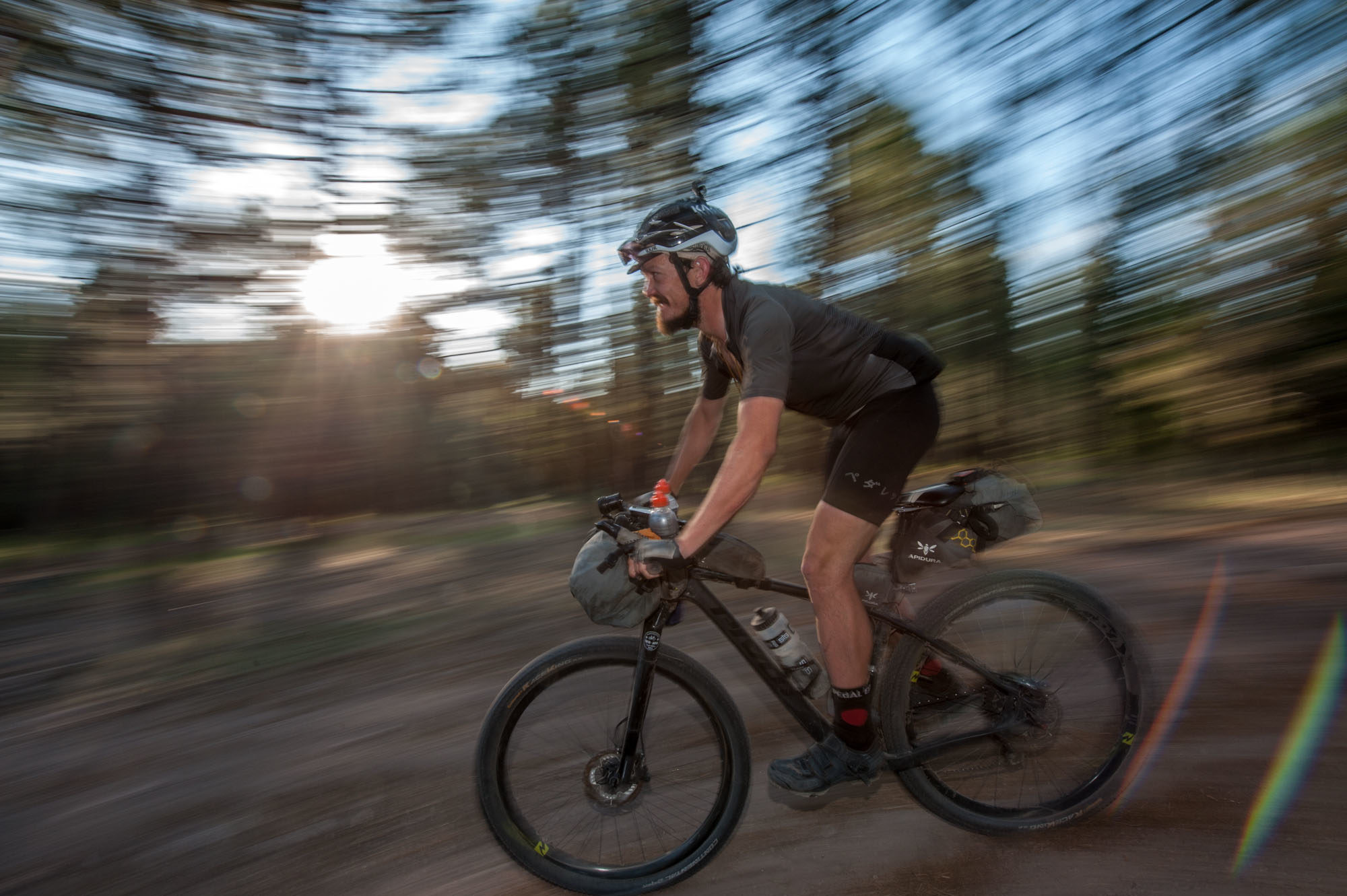
There was quite a bit of competition up front toward the beginning of the race. As competition faded, what kept you motivated to push your limits?
I think once I hit Butte I had Craig Stappler’s splits in sight from 2013 and there were a few key things about that timing schedule that made for a very nice services window that I wanted to be in. One thing was to get down Fleecer Ridge comfortably in the light, then get a good service stop at Montana High Country Lodge – hitting this at just after 10:00 PM meant for a golden eat-sleep-eat resupply with shower, laundry, and bed, so really efficient with a good sleep and no need to repackage the bike. This felt something like a reset after burning the midnight oil the first three nights. Even with another miserably wet bivy and rain, then through Idaho and a bit of mud through to Flagg Ranch, I didn’t drop behind too much but knew I had to race up Towogatee to get to the Lava Mountain Lodge before the kitchen closed to keep in that window. Again, I raced to Atlantic City, mimicking the race Craig and I had to get there and arrived just in time. As soon as I arrived they told me if I wanted food I had to give them my order immediately. So yeah, I was racing against the splits, first from Craig, then my own, and finally against the services. Pie Town was the closest call, the girl was drawing the curtains when she saw me pull up and I managed to get two whole pies to take away.
How did your bike and kit hold up? You had a flat tire in southern Colorado. Was that the only gear issue you had?
Pretty much the only issue, yeah. The 2.2″ Continentals are seemingly the only tires they now do with the protection sidewall. Tyre sidewall is one area on the TDR where you don’t want to compromise, especially running tubeless. The extra width gave great, volume which is very nice to have on the bumpier sections, but the profile does actually mean the sidewall sits proud of the tread, so I managed to get a cut on the sidewall just to the side of the tread, a really awkward location to get a seal. It did seal, but the seal would blow through occasionally, especially if I left the bike standing in the heat. I was re-inflating from Platoro through to Pie Town, maybe five or six times before I decided to put a tube in. I made the mistake of thinking it was a good idea to leave the sealant in, though. I was on the Separ road with a tailwind and about 90 miles to AW, went a little too fast into a heavily washboarded section and pinch flatted the rear. I had a big mess of sand, sealant, and clogged valves on my hands after that one and I only hand one super light tube left. I had to be diligent to clean everything down carefully and be sure of no repeat punctures, something that is very easy to get by missing a thorn, etc. – and then got plenty of pressure in the tyre and took it very steady until I was on the paved road to the border. By that time the wind had dropped and was changing direction. I’d say I cost myself about an hour with that, which was frustrating there right at the end, but slowing everything down was worth it to avoid further issues which could have meant a whole lot more time.
How does it feel to finally have the official route record after your super fast 2013 run with the detour?
I’m satisfied. I’ve seen the full course in as good a condition as you can really hope for. Okay, maybe it could have been slightly better, but I think if the course, and the winds particularly, are too flattering it takes away from the satisfaction. I am also satisfied that I gave it all I had. When you add it all up, sure, maybe there are a few hours of savings here and there still to have, but you only get to be in a position to know those details that having lived on such a schedule or seen it done, so I’d be quite happy if my TD racing stopped here having contributed my bit to its history.
What do you see for the future of the Tour Divide?
Hopefully more exceptional performances, more people getting inspired to ride it, and the principles and ethos of it being accessible and welcoming to them. One of the great things about the TDR is not only the abilities, but also the humility of those who ride it and the mutual respect between racers. I have nothing but respect for those who I have come up against and have had very kind, thoughtful, and meaningful words back from riders like Josh, Craig, Jesse, and Jefe, all of whom I hold in the highest esteem. Despite whatever commentary might be shared online by spectators, we are really in a contract of integrity with our peers and only those of us who’ve raced each other really know the nuances of what is involved, so their thoughts and words mean a lot to me especially.
I have to say something about Lael also, even though what can you say. She’s a truly remarkable rider and human in outlook and performance both in TDR and now in Trans Am. I found the Trans Am particularly exciting this year. Not many egos have been spared there and with not just one but two women going the distance at a hell of a pace, it shows it’s no fluke and why people should be excited about unsupported racing, because it is really as level and accessible a playing field as you are likely to see. Long may TDR and bikepacking races be a stage for this, and long may the principles of self-reliance and integrity hold strong.
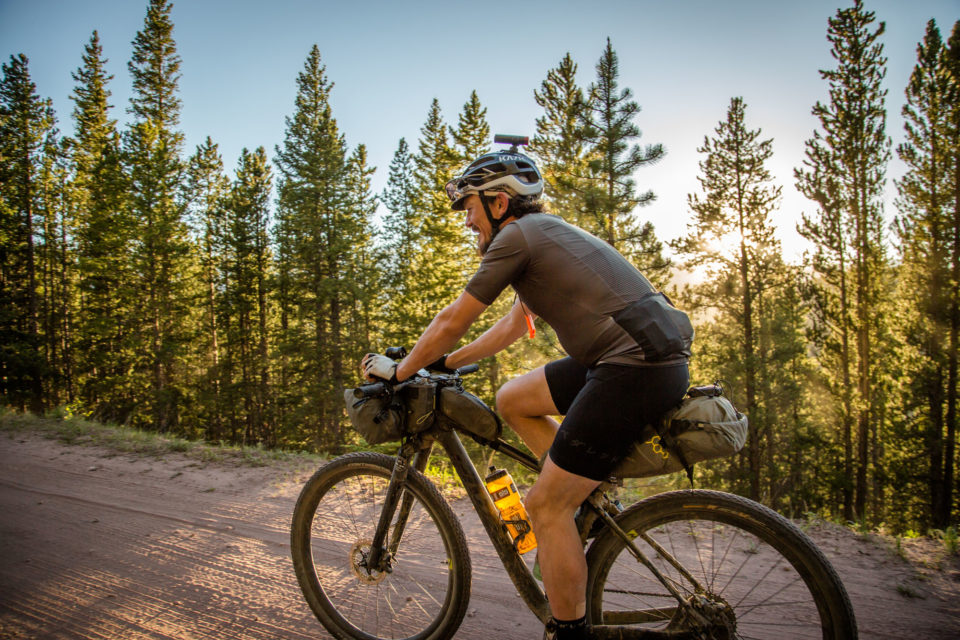
What would you like to say to all of the aspiring Tour Divide enthusiasts, and the riders currently on route?
Enjoy it, don’t lose sight of just how lucky you are to be there, and above all, manage your expectations. I was chatting about this with some friends in Banff. I think if we treat things as a pass or fail test that we can torture ourselves mentally over the outcome, but if we consider it more as an experiment with an uncertain outcome from the start, then we always at least get an answer.
Anyone you would like to thank?
First and foremost, my girlfriend Anna. She took over PEdALED’s Instagram account during the race with some really insightful, honest, and beautiful posts. Reading them after really made realize her fears and feelings as well as how connected she felt with me on the trail. I’d also like to thank the community around the TDR who have supported her and shared information and knowledge throughout. I’d like to thank the people who helped me get my equipment ready for the race at what was often a difficult time: Pivot, Shimano, Apidura, and Reynolds really came through for me on that. PEdALED have been there for me throughout also and their support on Transcontinental has been crucial to me being able to be here. I also want to thank those superstars of the trail who give so much great service and passion to the race for all the riders, especially Kathy at the Angler in Ovando, Rob at the Outdoorsman in Butte, Russ and his wife at the Montana High Country Lodge, Kirsten at Brush Mountain Lodge, David at Como, Scott, and the guys at Absolute Bikes, the Toaster House, and all those who make the pies in Pie Town. Finally, Rachel and Mary, for appearing out of the dark in a van 30 miles from AW shouting they were coming to pick me up and Chris and all the guys at Pivot for bringing me back here and treating me so well while I recover.
Please keep the conversation civil, constructive, and inclusive, or your comment will be removed.






